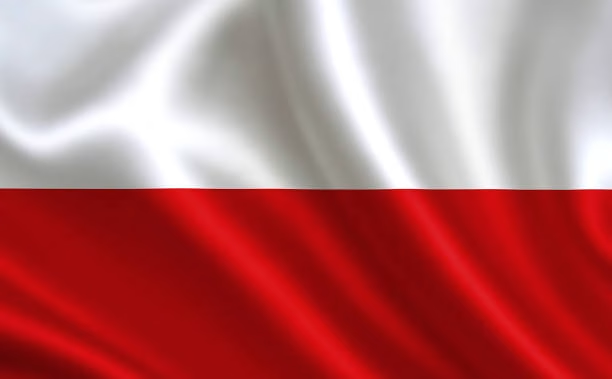Activists are pushing for plant-based school menus. Learn how to protect dairy in schools and counter their influence.

Imagine your child’s school lunch menu shifting from milk and chicken nuggets to tofu wraps and almond milk. With vegan activists progressively advocating for ‘plant-based’ diets in schools, the need for immediate action to change the nutrition for millions of pupils becomes increasingly urgent. This paper investigates the emergence of this movement and its ramifications for the dairy sector and children’s nutritional welfare.
The goal is to find activists’ tactics—from grassroots campaigns in primary schools to college policy changes. Although the shift towards better food options is admirable, we must also consider the potential benefits of this change, particularly its positive effects on the dairy sector and children’s nutritional welfare. This paper aims to shed light on these hopeful outcomes.
The Humane Society of the United States, a leading advocate for animal welfare, wants half of school lunches to be plant-based by 2027. We will review case studies like the University of Michigan’s commitment to cutting animal-based alternatives, examine the most recent AVA Summit in Washington, D.C., and provide actions dairy supporters may take to buck these trends. This problem addresses dietary freedom, financial livelihoods, and essential elements of nutritional education in modern societies.
The Shifting Sands of School Menus: Navigating the Rise of Plant-Based Choices
Targeted lobbying is driving the growing momentum for plant-based diets in schools. Universities ranging from Western Oregon University to the University of Michigan and the University of Wisconsin-Madison have drastically cut animal-based meals. By providing more plant-based choices, the University of Michigan, for example, is actively striving toward sustainability objectives.
Currently, plant-based options account for up to 20% of meals in K–12 classrooms, while colleges and institutions show higher percentages of 20% to 30%. This discrepancy shows different degrees of acceptance and application across various phases of schooling. With a strong push towards changing eating alternatives, the Humane Society of the United States (HSUS) wants to increase plant-based meals to 50% by 2027.
Important events highlighting the need to integrate younger generations include the Animal & Vegan Advocacy (AVA) Summit in Washington, D.C. Integrating more plant-based options on school menus, advocates seek to inculcate lifetime behaviors emphasizing animal kindness and environmental sustainability.
Activists’ Multi-Pronged Strategy to Plant the Seeds of Change
Advocates use a diverse strategy to support plant-based diets in schools. Emphasizing the need to address younger audiences—from kindergarten—at the AVA Summit in Washington, D.C., the Early introductions of plant-based ideas seek to instill these ideals into the way of life of youngsters, so vegan alternatives appeal more as they grow.
Crucially important is social media outreach. Facebook, Instagram, and TikHub, activists interact with a large audience, sharing knowledge and success stories. This digital approach uses popular culture and young trends to make plant-based diets attractive and readily available.
Crucially, there are also relationships with young-targeted brands. Working with well-known businesses that appeal to younger groups helps include plant-based messages in goods and marketing initiatives targeted at children and teens. These alliances help make plant-based options on school menus more legitimate and accessible.
These tactics ultimately seek to standardize school plant-based diets, continuously impacting schools. Early education, internet interaction, and deliberate brand partnerships try to change younger generations’ nutritional tastes toward more plant-based choices.
Repercussions on the Dairy Industry: Navigating a New Norm
The growing number of plant-based meals offered at colleges and universities may significantly change the dairy sector. Traditional dairy products may lose the market as educational institutions move toward plant-based options, endangering the lives of dairy farmers who have long been vital agricultural community members. Less young people drawn to dairy might affect the long-term demand for milk, cheese, and yogurt, influencing the whole supply chain.
Dairy farmers might have to vary their offerings to incorporate plant-based substitutes or risk losing market share to new rivals. Companies that have previously invested in plant-based dairy alternatives might have an advantage, forcing conventional dairy farmers to create or collaborate with plant-based companies. This change might also impact allied businesses, such as equipment makers, veterinary services, and feed producers, and, therefore, influence the whole agriculture industry.
A Proactive Approach to Ensuring Dairy’s Place in School Meals
To counteract the rising push for plant-based menus, it’s crucial to implement a robust strategy advocating for dairy in school meals. Here are actionable steps:
- Nutritional Education Initiatives
Develop comprehensive nutrition education programs that highlight dairy’s benefits. Emphasize essential nutrients like calcium, vitamin D, and protein in milk, cheese, and yogurt. Conduct workshops with dietitians to engage students and parents in understanding dairy’s role in a balanced diet. - Establishing Strong Partnerships with Schools
Forge partnerships with local schools to ensure dairy remains on menus. Collaborate with school nutritionists to create appealing dairy-rich meal options. Sponsoring school events and wellness programs can keep dairy at the forefront of students’ choices. - Highlighting Balanced Diets
Promote balanced diets through campaigns focusing on the synergy between food groups. Use social media, newsletters, and community outreach to share how dairy, whole grains, fruits, and vegetables contribute to health. Professional testimonials add credibility. - Dairy-Focused Campaigns and Initiatives
Implement campaigns showcasing dairy’s benefits. Activities can include dairy-tasting events, farm tours, and cooking classes. Collaborate with school TV channels and online portals to stream educational content on dairy farming and its dietary role. - Student and Parent Engagement
Organize informational sessions and participatory activities for students and parents. Create programs where children learn to prepare meals with dairy—host parent-teacher meetings to address nutritional concerns and respond to plant-based arguments. - Showcasing Dairy’s Role in Local Economies
Highlight how dairy farming benefits local economies. Present data on jobs and revenue generated by the dairy industry in-school presentations and community events to foster support for local dairy farmers.
Implementing these strategies will ensure that dairy’s benefits are well-communicated and appreciated, safeguarding its place in future dietary choices.
Notable Success Stories in Dairy Promotion
The NFL’s “Fuel Up to Play 60” initiative, sponsored by the National Dairy Council, is one noteworthy success story. This program advances school dairy consumption by promoting better living with nutrient-dense foods like milk, cheese, and yogurt. Higher demand for dairy in program cafeterias by schools has been noted, therefore stressing its influence on school menus.
The Dairy Council of California’s “Dairy Optimization in School Meals” project is another outstanding effort. This initiative offers instructional materials on the advantages of dairy and teaches school nutrition personnel to include dairy in well-balanced meals. Participating schools have seen improved diversity and quality of dairy products, raising student happiness and involvement in school lunch programs.
The Bottom Line
Unquestionably, plant-based activists are making significant breakthroughs within academic buildings as we negotiate the changing dynamics of school meals. Driven by activists committed to imprinting their beliefs in the next generation, the demand for “plant-based” alternatives in schools is expanding. This endeavor differs from early kindergarten influence to alliances with young-oriented companies and social media marketing.
By 2027, organizations like the Humane Society of the United States want more plant-based meals available at K–12 institutions, colleges, and universities. Survey data and favorable taste-testing event answers indicate an increasing student inclination for these alternatives. For the dairy sector, this change offers both possibilities and difficulties; it must change to stay in school meals.
The consequences are significant, pointing to a societal change toward a more plant-based future connected with ethical and environmental issues. Strong school alliances, nutritional education, and campaigns stressing balanced meals, including dairy, should form part of our proactive strategy. Although the emergence of plant-based meals at educational institutions poses difficulties, it also enables the dairy sector to interact significantly with the younger generation. The encouragement of dairy’s advantages and local economic contributions can guarantee that it remains a mainstay of school food.
Key Takeaways:
- Vegan and animal rights activists are advocating for increased “plant-based” menus in K-12 schools, colleges, and universities.
- Institutions like the University of Michigan, University of Wisconsin-Madison, and Western Oregon University have pledged to reduce animal-based choices.
- The Humane Society of the United States (HSUS) aims for 50% of institutional dining program meals to come from “plant-based” sources by 2027.
- Currently, “plant-based” offerings comprise 20% to 30% of college and university menus but only up to 20% of school district menus.
- The AVA Summit emphasized indoctrinating younger children, starting from kindergarten, to further vegan and animal rights agendas.
- Activists employ strategies like social media outreach, university campus tables, and partnerships with youth-focused brands to gain interest.
- Dairy advocates can mitigate the influence of these activists by adopting proactive measures.
Summary:
Vegan activists are advocating for plant-based diets in schools, causing a shift in nutrition for millions of students. The Humane Society of the United States (HSUS) aims to increase plant-based meals to 50% by 2027, addressing dietary freedom, financial livelihoods, and essential elements of nutritional education. Advocates use various strategies, including grassroots campaigns, social media outreach, and working with young-targeted brands to make plant-based options more accessible. However, the growing number of plant-based meals in colleges and universities may significantly change the dairy sector, potentially affecting traditional dairy products and endangering dairy farmers. Dairy farmers may have to adapt their offerings to incorporate plant-based substitutes or risk losing market share to new competitors. Companies that have invested in plant-based dairy alternatives may have an advantage, forcing conventional dairy farmers to create or collaborate with plant-based companies. To counteract this trend, a proactive approach to advocating for dairy in school meals is crucial, including developing comprehensive nutrition education programs, establishing strong partnerships with schools, and promoting balanced diets through campaigns focusing on the synergy between food groups.













